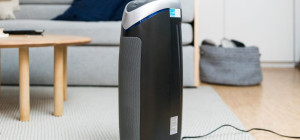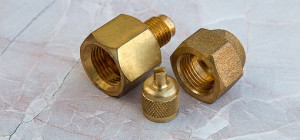To understand the need for a water flow meter, you need to know what it does and how it benefits you. So after we have discussed these points, we will try to cover the different types of water flow meter that can be considered under different circumstances.
What is a water flow meter?
In general parlance, a water flow meter is an engineered design that is used to calculate or measure the rate of flow or quantity of water/any liquid that moves through a given pipe. But for each type of flow measurement different engineered equipment is required and each has its application and constraints. Simply put, a flow meter used for measuring water flow rate cannot be used to measure the speed of gas.
How does a flow meter work?
The flow meter is made of three major components, a primary component, a transducer unit and a transmitter unit. The three can be put together as one device, or there can be two or three separate devices depending on the make and design you are buying. So what happens is, that when the water passes through the primary devise the transducer senses it and sends a raw signal to the transmitter that produces a usable flow signal based on it.
So the result of the measure of water flow will be either as a flow rate or a totalized amount. Say, it can be 500 letters per minute or just 500 liters in entirety.
Classification of water flow meters?
There are five different types of water flow meter based on their primary classification:
- Positive Displacement water flow meters
- Differential Pressure flow meters
- Velocity flow meter
- Mass flow meter
- Open channel flow meter
The most common type of flow meters used around the world is those that use the displacement and the velocity based technology of flow measurement.
Now, depending upon the method used, different models and technology can be used to make these flow meters, like ultrasonic flow meters, magnetic flow meters, etc.
With technological advancement, more ergonomic designs are now available in the market. Most commonly you will find these water flow measuring devices in every house or an apartment building.

The one most commonly used water flow measuring unit is the Clamp-on water flow meter. It can easily be used in any household, buildings, commercial establishment or any industry type. Let’s discuss it in detail.
Clamp-on water flow meter: As the name suggests, it’s a clamp-on type water flow measuring device. No specific engineering is required to fit this on the main pipe on which water flow is to be measured. So any household can use it, and it’s a DIY measurement system that doesn’t require expert supervision.
The clamp-on water flow meters is also based on the ultrasonic flow measurement technique. It uses the ultrasonic sound to measure the velocity of the water, so it need not be immersed in water, or the water pipe need not be cut to place or fit the device.
If you are using the clamp on meters, it can easily be installed without disturbing the current water flow work. The clamp on design offers versatility and cost-effectiveness. It can be easily used to efficiently measure water flow on pipe ranging from ½” to 160”.
The clamp-on technique of water flow measurement can easily withstand temperature as high as 200 degrees centigrade and is ideal for measuring the liquid with limited gas or solid content. Since the clamp-on meter is very securely placed outside the pipe, so you need not worry about its materials compatibility with water or the pressure in the pipeline.
Benefits of using a clamp-on water meters
- It has no additional parts and is maintenance free
- There is no need to cut the pipe for installation
- No special skills required for installation
- Versatile in output and communication
- Low cost of ownership
- There is no risk of leakage or corrosion
- Suitable for a large variety of pipe material.
So, if you are looking to get one for your home or establishment, all you need is to order this online or buy from a store near you. But you must buy one electronic ultrasonic converter and one flow sensor along with the flow meter to get the complete setup. It’s a one-time low investment that will last for almost a lifetime with no to minimal maintenance cost







